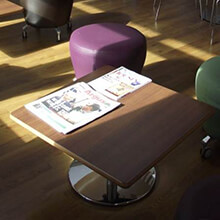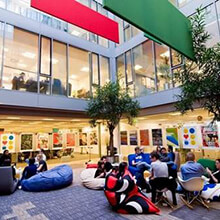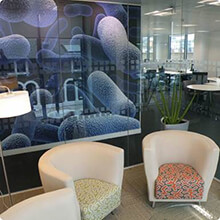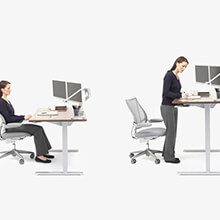- Contact 0870 350 7767
- |
- Advertise
Successful flexible working is built on the foundations of great office design
 News and PR from Fresh Workspace Ltd - Published 27 July 2017
In May, the Wall Street Journal reported IBM had announced it was obliging a significant number of its staff to give up on remote working and move back to corporate offices, many of them regional hubs
News and PR from Fresh Workspace Ltd - Published 27 July 2017
In May, the Wall Street Journal reported IBM had announced it was obliging a significant number of its staff to give up on remote working and move back to corporate offices, many of them regional hubsIn the first place, the decisions by both IBM and Yahoo werent based on some dated desire for a command and control management culture but rather data which showed how the office plays an essential role in providing the setting for collaboration and the exchange of ideas and information. Theres no doubt that people get some things done better away from the office hubbub, but they also need to share a space with colleagues to meet some of their other practical and emotional needs.
That is why we have yet to see a company go the whole hog and simply do away with their offices completely, replacing them with a technologically interconnected web of remote working employees. It is why some of the worlds most cutting edge tech firms such as Google, Apple and Facebook are investing so heavily in the latest generation of corporate headquarters buildings and campuses. It is why Governments and developers invest so much time, effort and money in creating like-minded enclaves of businesses, especially for firms working in the kinds of creative and technology based sectors most able to offer flexible working. The underlying thinking seems to be to offer people the freedom to choose where to work, but then create an office that is so great it makes the office the best possible choice.
So that is not to say there is no uptake in flexible working. What has emerged is a balanced and better understanding of the range of physical, cultural and virtual settings organisations need to offer to attract, retain, motivate and empower people. Workplace and office design remain important factors in providing all employees with the right environment in which to thrive, including (or even especially) those who enjoy some form of flexible working arrangement.
The important point is that staff are empowered to work in ways that are best for them, with an ability to book and use space within buildings easily depending on what they are doing and who they would like to meet and work alongside. Contrary to what you may have read, the current debate marks neither the end of the office nor of flexible working. Instead it marks the advent of a new and more sophisticated balance between the two in which office design plays an essential role for empowered employees.
Other announcements from Fresh Workspace Ltd
-
The wellness agenda has evolved into a core pillar of real estate strategy.
Changing workplace strategies confirm importance of wellness, technology and productivity.
16 Apr 2018
-
Wellbeing and productivity of employees.
Environmentally friendly buildings help you to sleep better and work more productively.
19 Feb 2018
-
Shedding some daylight on one of the most important aspects of office design
One of the most underappreciated and least talked about aspects of a productive workplace design is not only completely free, we enjoy a limitless supply of it.
17 Jan 2018
-
Modern facilities management thinking views offices as a strategic asset.
For most organisations the total operating cost of their property runs at between 10 and 20 per cent of their annual operating costs. By any measure, that is a significant proportion of expenditure.
16 Oct 2017
-
A feeling of togetherness is essential, so why would we kill off the office?
It is still depressingly commonplace to read proclamations of the death of the office.
05 Oct 2017
-
How to decide on the best type of office fit out for you
It is essential to choose a specialist office fit out company that can deliver a wide range of office design and fit out solutions including Category A and B design and build solutions.
04 Oct 2017
-
Workplace design reflects our changing relationship with work and society
Of all the things we buy with the exception of our clothes, furniture is the most intimate, the one we spend most time in contact with.
23 Aug 2017
-
Good ergonomics is about moving and standing as well as sitting
Although the idea has been around for a long time, workplace ergonomics first came to prominence in the wake of the intensive growth in the use of computers.
29 Jun 2017
-
Intelligent office design & fit-out can help facilities managers harness change
The workplace revolution we foresaw twenty odd years ago was supposed to have eradicated some of the oldest challenges known to facilities managers.
27 Apr 2017













